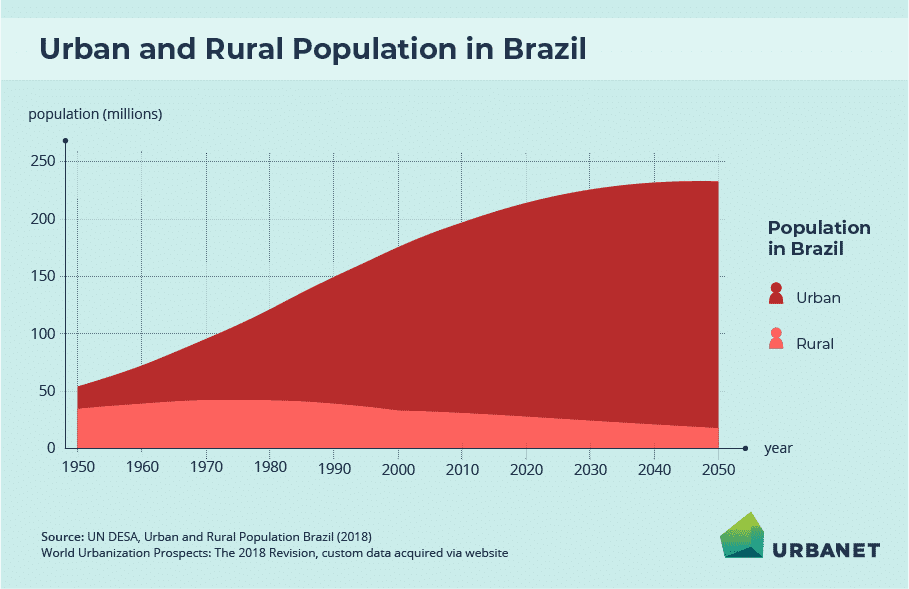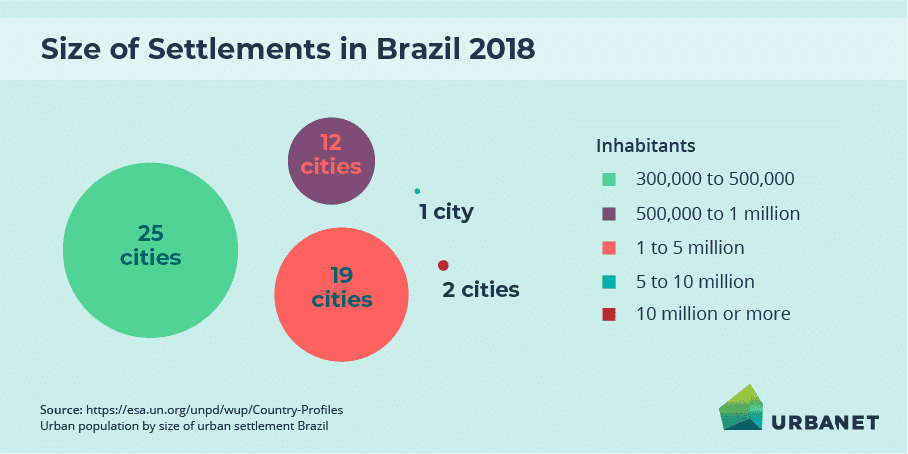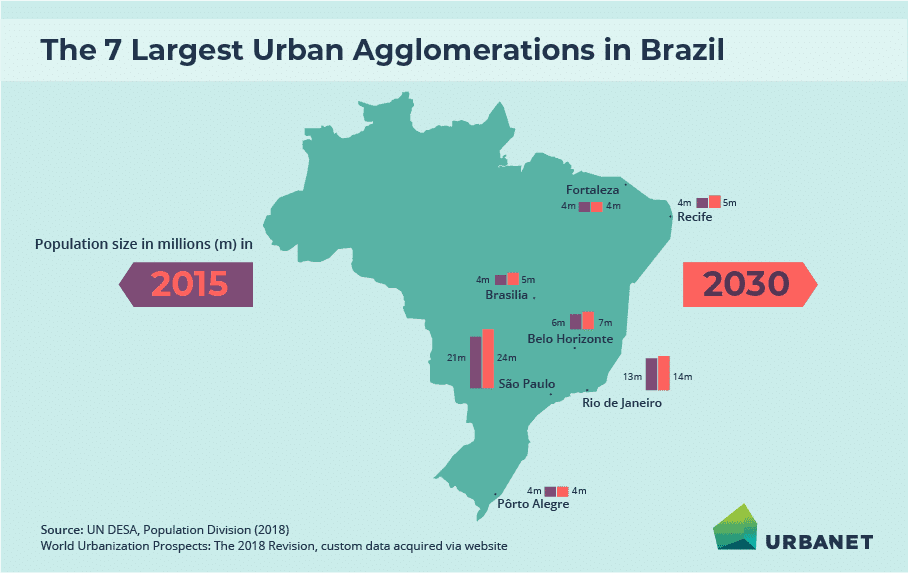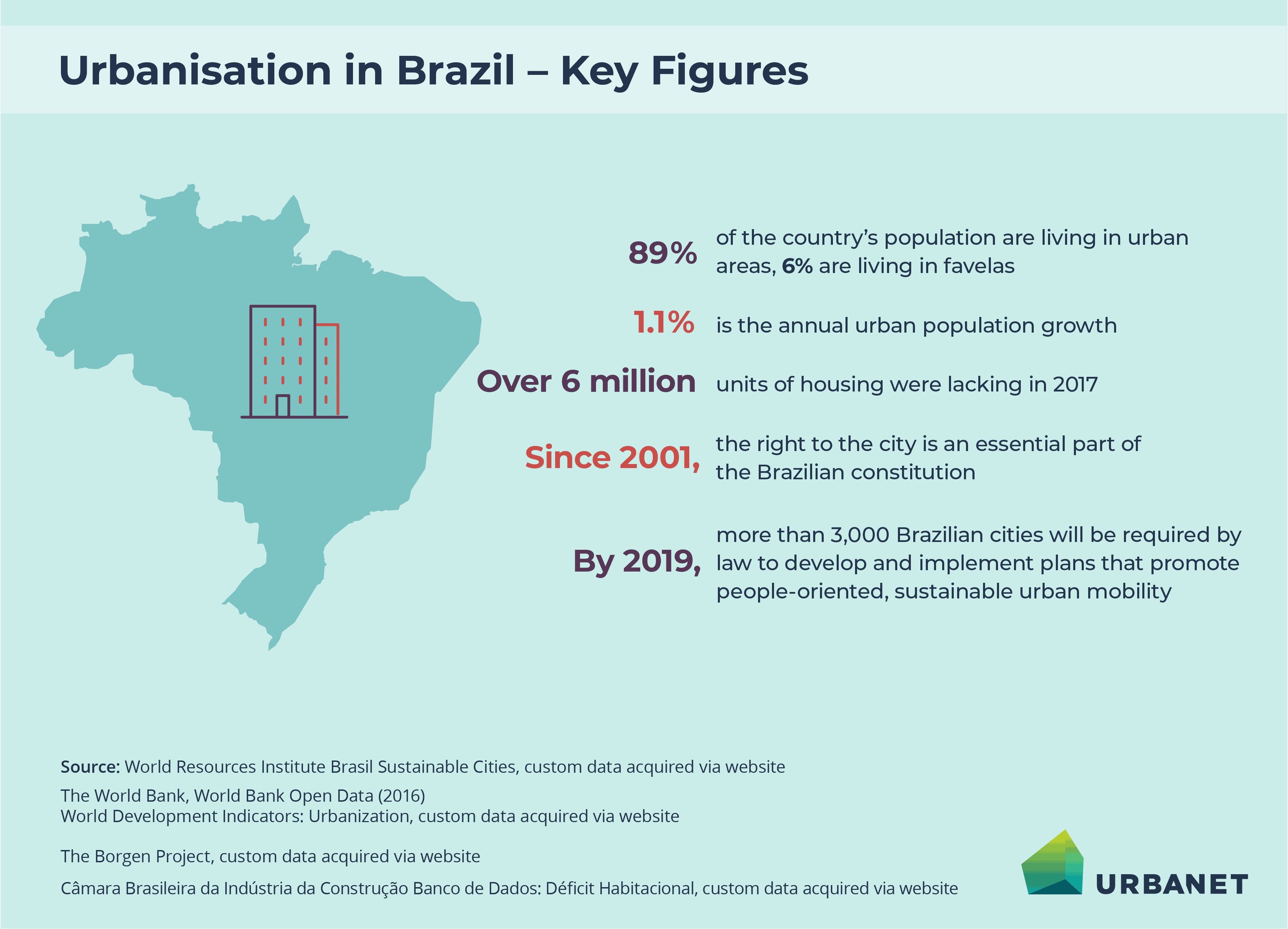Infographics: Urbanisation and Urban Development in Brazil
URBANET’s latest infographic series provides you with interesting facts and figures about urbanisation in Brazil.

Urbanisation in Brazil – Urban and Rural Population In Brazil | Brazil Infographics © GIZ
The graphic displays the steady growth of Brazil’s urban population from 1950 onwards and shows the slower growth of the rural population. Around 2000, for the first time, the rural population declines and is continuing to do so while the urban population continues to rise rapidly.

Urbanisation in Brazil – Size of Settlements in Brazil | Brazil Infographics © GIZ
In 2018 a large number of Brazil’s cities have a population between 300,000 and 1 million inhabitants. There are 37 medium-sized cities of such population size, 19 cities ranging between one and five million inhabitants and only two urban settlements with 10 million or more inhabitants.

Urbanisation in Brazil – Largest cities in Brazil | Brazil Infographics © GIZ
The seven largest cities in Brazil will become even bigger until 2030. Prospects suggest that the population of Brazil’s capital Brasilia will increase by about one million within the next decade to up to 5.19 million people. São Paulo will experience the highest growth rate with 200,000 inhabitants per year until 2030.

Urbanisation in Brazil – Key Figures | Brazil Infographics © GIZ
